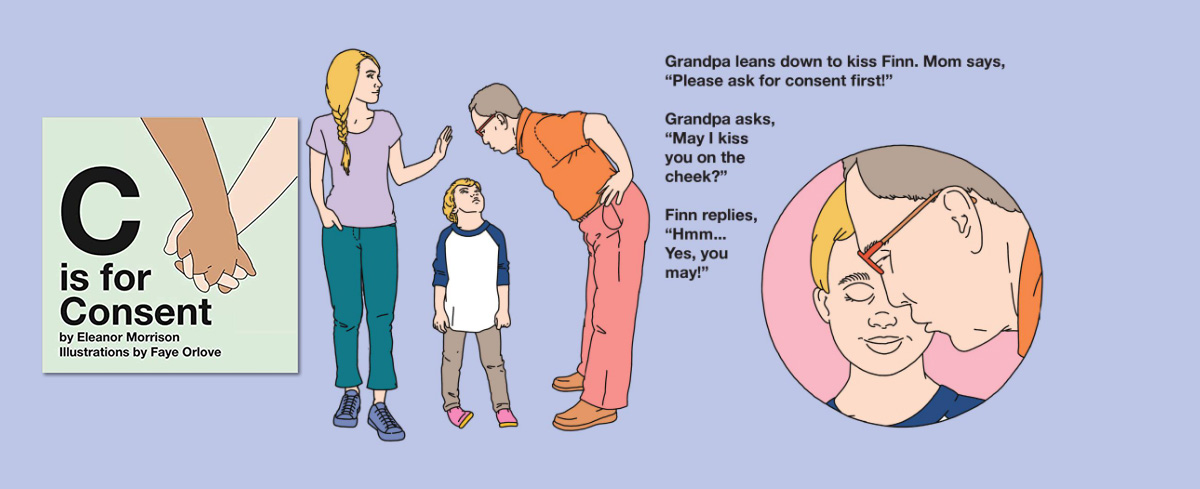There’s a new children’s book on the market, and it’s designed to teach children aged zero-up about the importance of giving consent before allowing family and friends to make physical contact.
According to the books stated purpose, ‘C is for Consent’ follows “expert recommendations” about letting children decide when and how to offer affections to others. “By not forcing hugs and kisses, caregivers help kids feel control over their bodies, comfortable with expressing boundaries, and respectful of the boundaries of others.”
Despite recommendations by the American Academy of Pediatrics and recent publicity efforts by the Girl Scouts, many people still feel that making their kid hug grandma is harmless. Unfortunately, doing so teaches kids that (1) what happens to your body is not always up to you, and (2) it is okay to push other people to do things with their body that they don’t want to do.[note]Kickstarter: C is for Consent[/note]
Author Eleanor Morrison said she decided to base the story on a white boy because white boys become privileged white men who have to be taught how to be responsible with their power.
“While I am typically drawn toward female protagonists, I felt this must feature a boy because consent cannot be seen as a girls-only concern,” Morrison said. “I decided to name and model the character after my own son, Finn.”
“I chose to keep the character white because white boys become white men who institutionally experience tremendous privilege, and I want to fully engage that audience so they grow up to wield that power responsibly,” she added.
They’re starting my 11 month old nephew early ?? pic.twitter.com/PftCJkNtwj
— zoé samudzi (@ztsamudzi) October 21, 2018
Morrison said she hopes to turn the book into a series, addressing other issues such as feminism and racism.
“Next up could be ‘F is for Feminism’ (where his friend Ru teaches Finn that boys can and should be feminists),” she said. “Or ‘R is for Race’ (based on research, race should be openly talked about with young kids, especially white children who often do not experience race in the same way as others and aren’t helped by color-blind style approaches.”






















